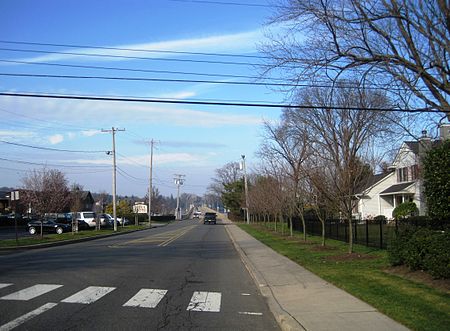Oceanic, New Jersey
Monmouth County, New Jersey geography stubsRumson, New JerseyUnincorporated communities in Monmouth County, New JerseyUnincorporated communities in New Jersey

Oceanic is an unincorporated community located within Rumson in Monmouth County, New Jersey, United States. Located on the north side of the borough, Oceanic contains most of Rumson's commercial businesses mainly along Bingham Avenue (County Route 8A) and River Road (CR 10). Bingham Avenue connects directly to the Oceanic Bridge over the Navesink River to the Middletown Township community of Locust Point.
Excerpt from the Wikipedia article Oceanic, New Jersey (License: CC BY-SA 3.0, Authors, Images).Oceanic, New Jersey
Oak Tree Lane,
Geographical coordinates (GPS) Address Nearby Places Show on map
Geographical coordinates (GPS)
| Latitude | Longitude |
|---|---|
| N 40.377777777778 ° | E -74.010555555556 ° |
Address
Oak Tree Lane 28
07760
New Jersey, United States
Open on Google Maps








